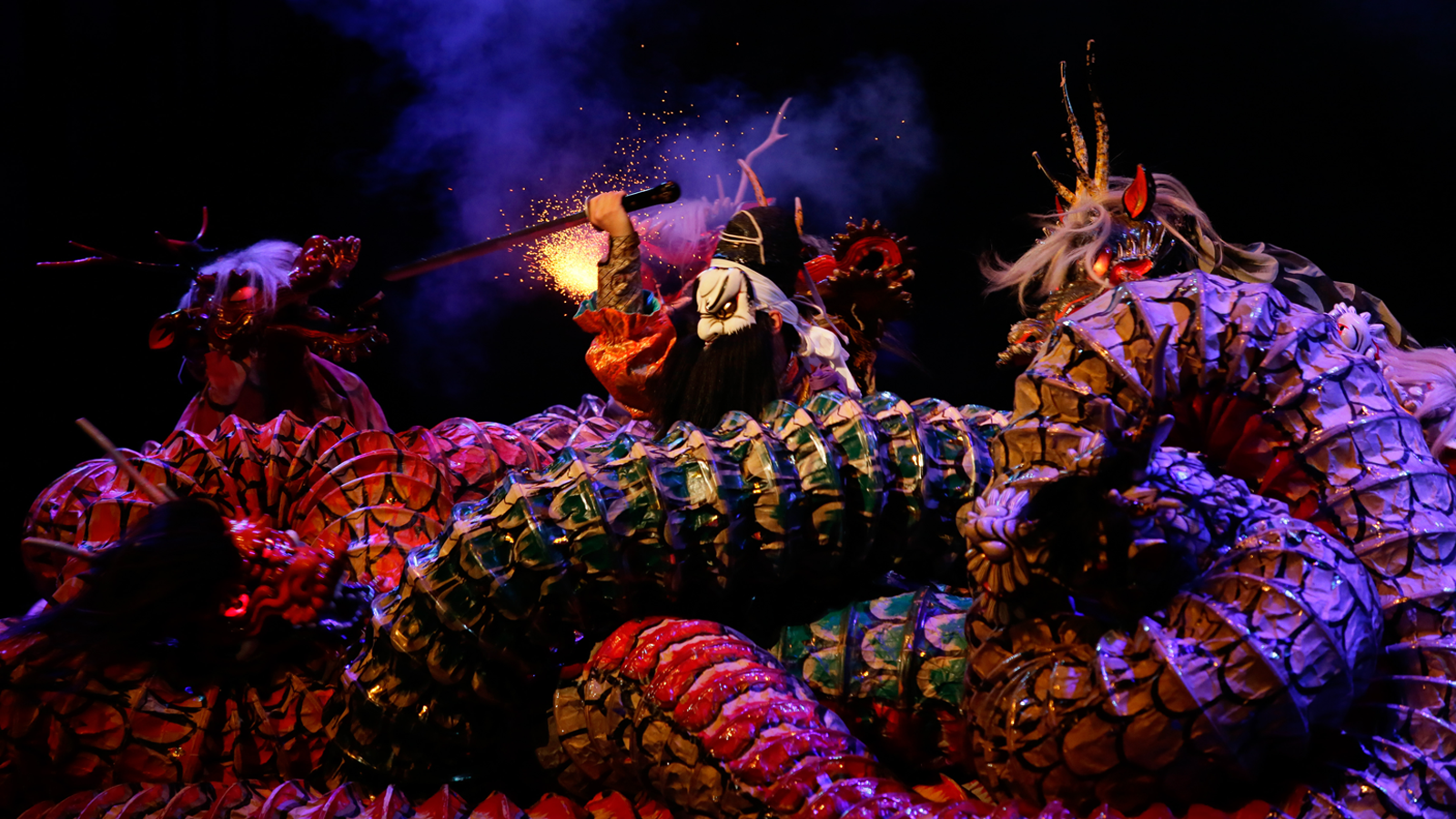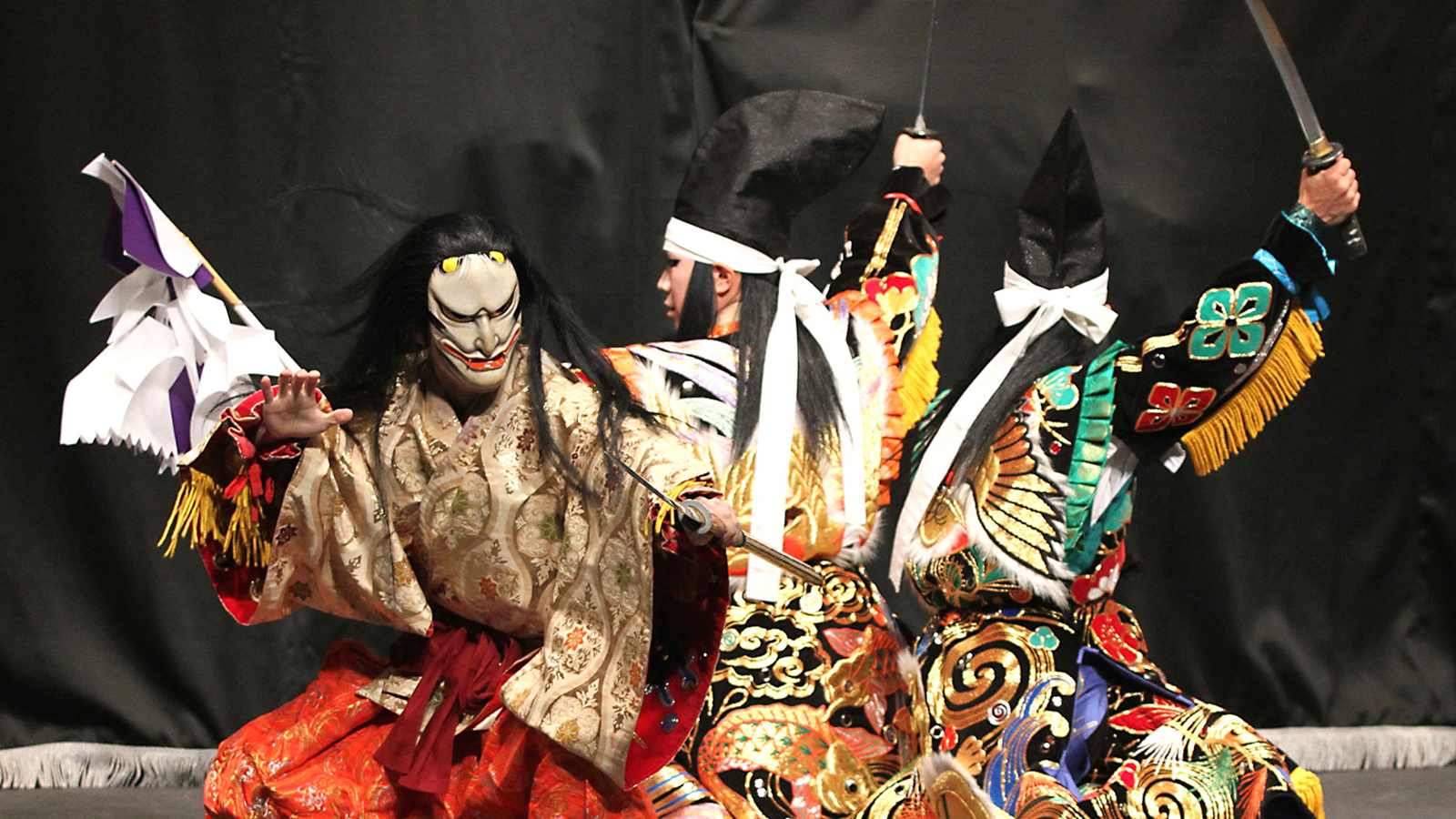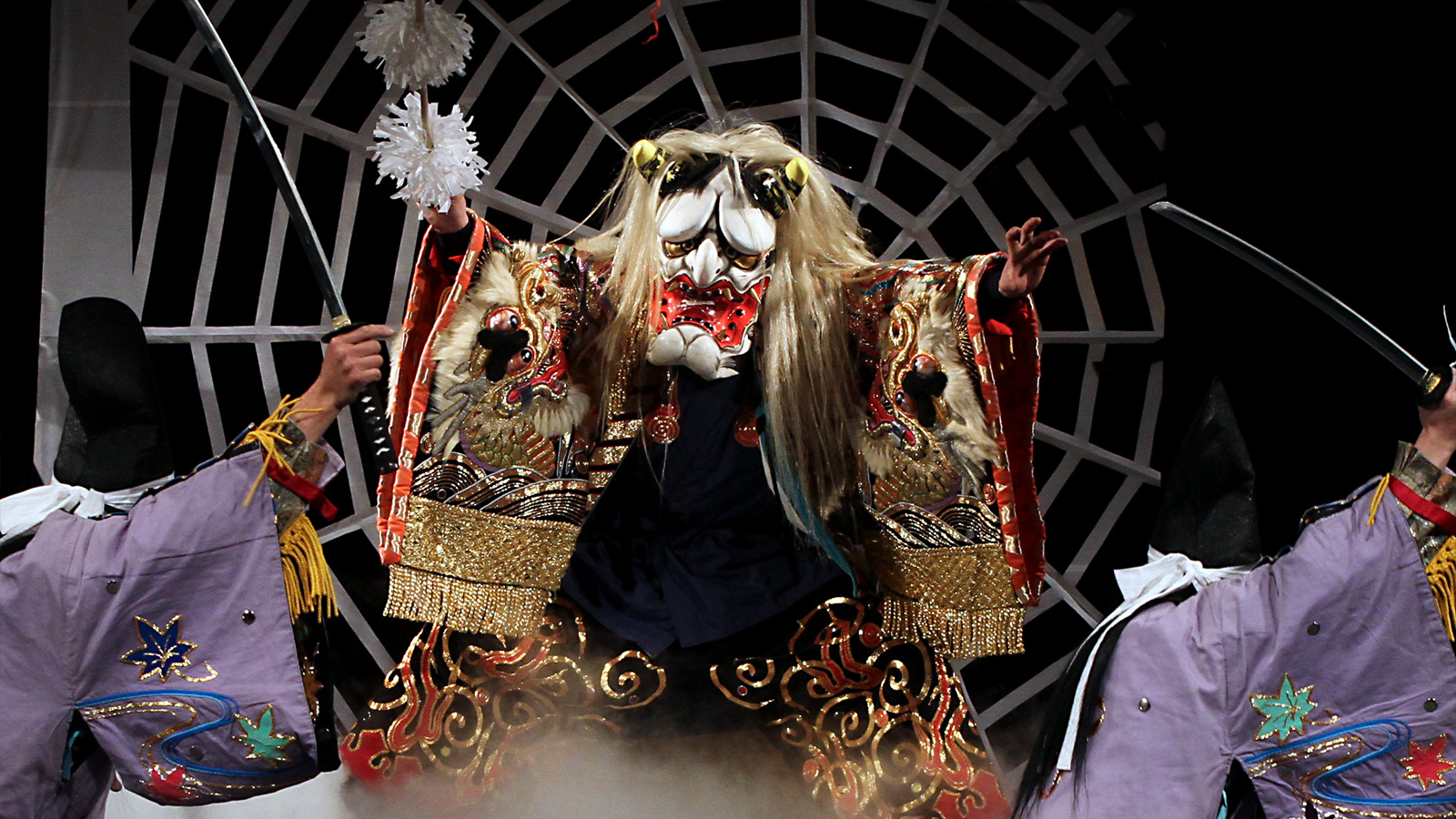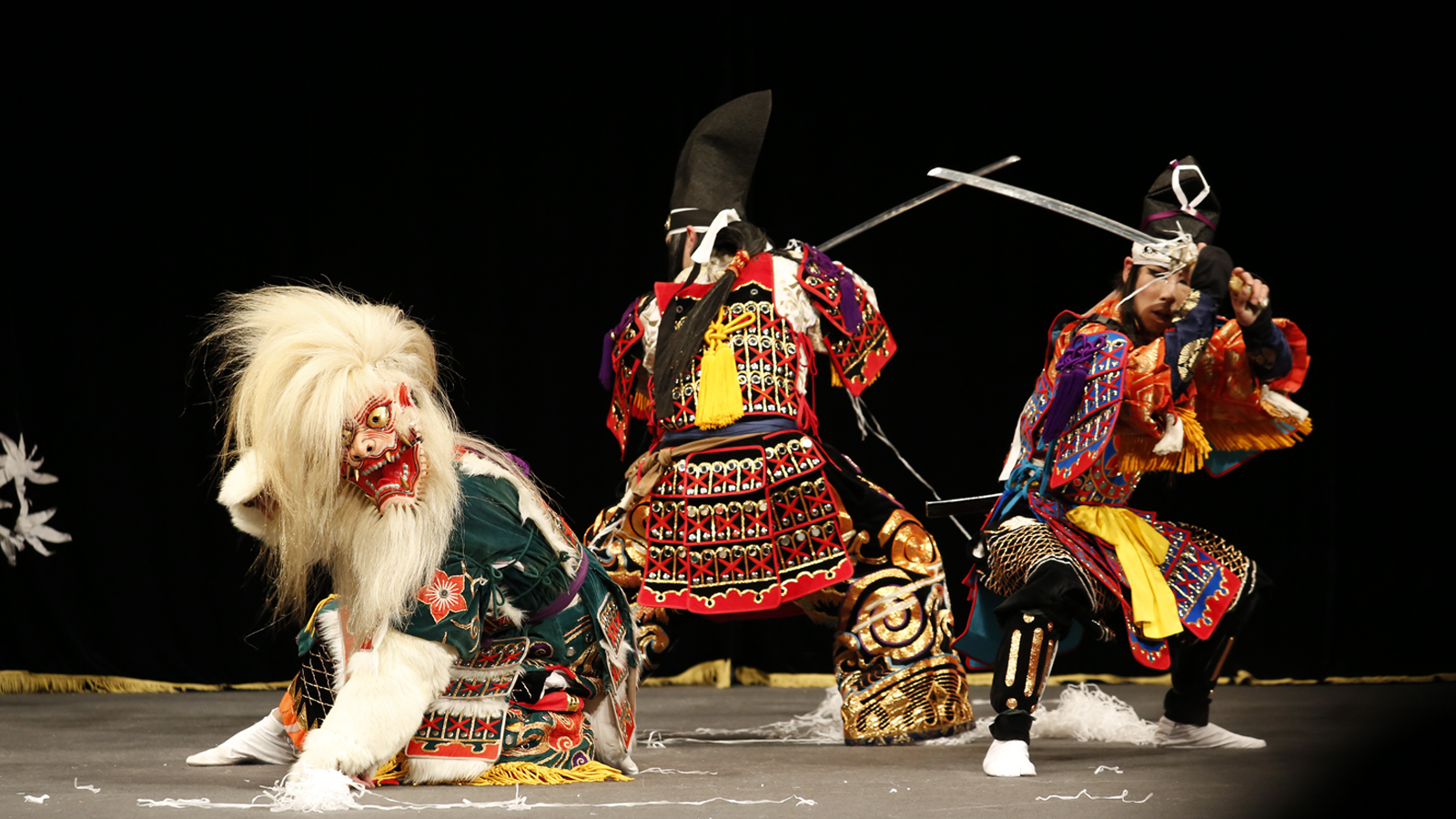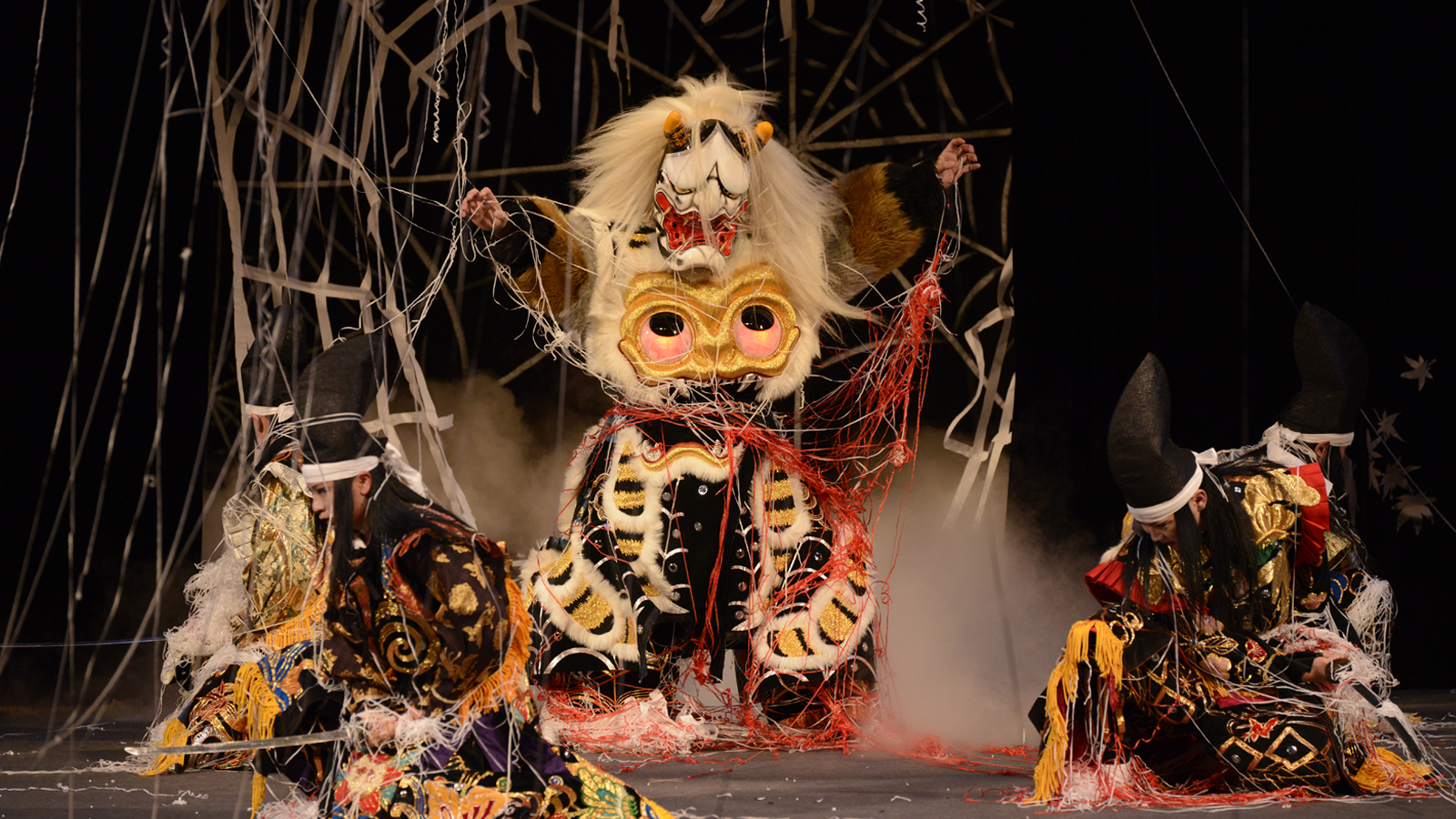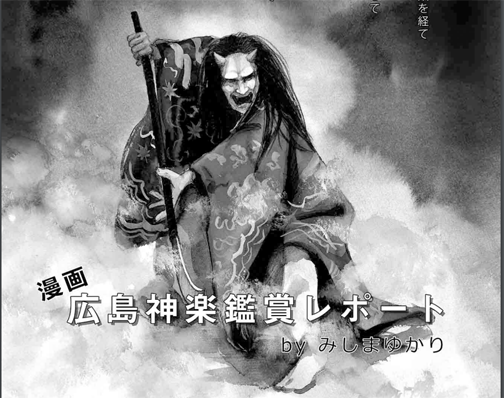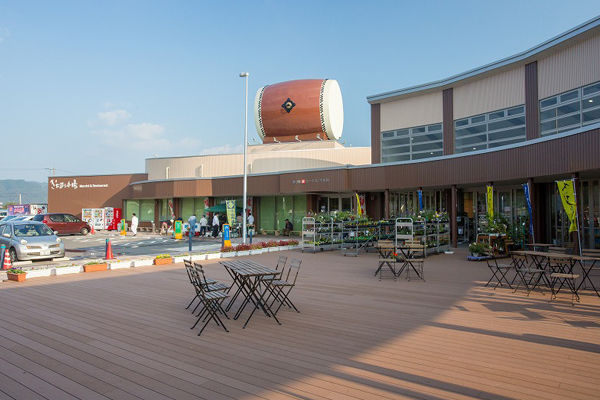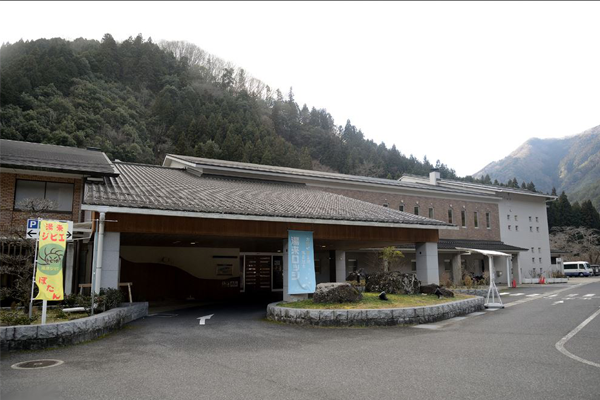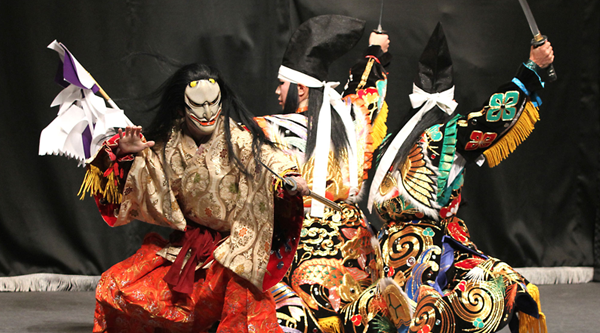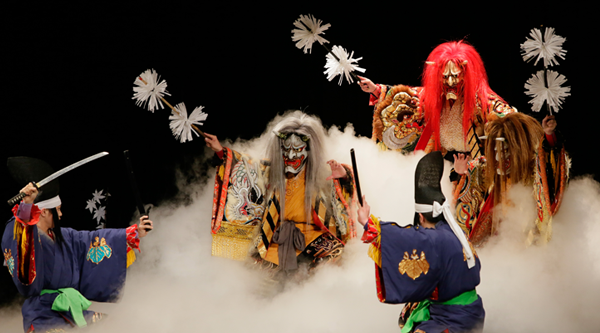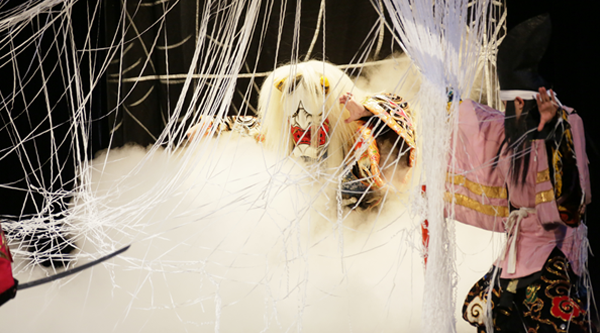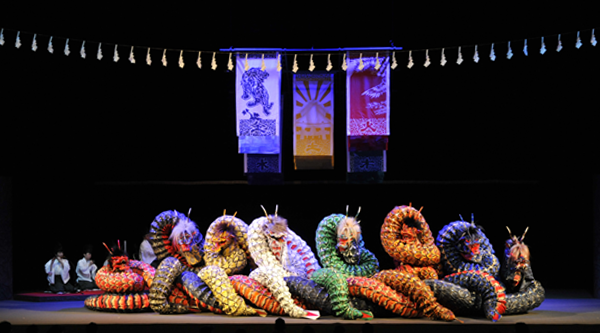Beginners Guide to Hiroshima Kagura
Illustrated by Yukari Mishima
This beginners guide is an easy-to-understand manga that introduces Hiroshima Kagura to first-time viewers. Illustrated by Yukari Mishima, it’s a must-read for anyone interested in learning more about Hiroshima Kagura!
Yukari Mishima (Illustrator)
・Born in Hiroshima City, Hiroshima Prefecture in 1980
・Member of Illustrators Tsūshin (Professional Association of Illustrators)
・Member of Illustainers
Shinto Ritual Kagura
Kagura is a Shinto ritual said to have roots in Japanese mythology. It begins with invoking the gods and performing for them rituals which express gratitude for the repose of departed souls, bountiful grain harvests, and deliverance from natural disasters. Imbued with local flavor and culture, kagura came to be passed down in various regions across Japan as a ritual to be dedicated to the gods protecting the community at local Shinto shrines.
Hiroshima Prefecture is home to one of the most active kagura scenes in Japan.
The kagura performed in Hiroshima is largely divided into five types and is passed down from generation to generation by hundreds of kagura troupes. While respecting the Shinto elements of traditional kagura, the kagura of Hiroshima has also incorporated elements of theatrical entertainment, giving birth to their own unique brand of performance.
Today, kagura isn’t just dedicated at shrines: it’s a must for big events and celebrations. In addition, kagura competitions are also held throughout the prefecture, further cementing kagura as a beloved traditional performing art to the people of Hiroshima.
With fabulous costumes and dynamic action, be sure to catch a kagura performance on your next visit to Hiroshima and experience the magic of Hiroshima Kagura!
Information about other kagura performances can be found below
Different Styles of Kagura in Hiroshima Prefectu
Hiroshima Prefecture is home to a thriving kagura community of more than 200 kagura troupes and is famed as one of the best places in Japan to see kagura, in addition to Shimane Prefecture and Miyazaki Prefecture.
In Hiroshima, it’s a part of our culture that has been cultivated through the years in each region of the prefecture, passed down from generation to generation. To us, kagura is a gift that has been given to us by our ancestors who lived in harmony with the seas, mountains, and rivers around them.
Looking at the characteristics of each region’s kagura, Hiroshima Kagura can be divided into the following five categories: Aki Jū-ni Jingi (The 12 Plays of Aki), Geihoku Kagura, Geiyo Island Kagura, Bingo Kagura, and Hibakōjin Kagura.
Reference source: Mimura, Yasuoji. Exploring Hiroshima Kagura. Nannan Publishing.
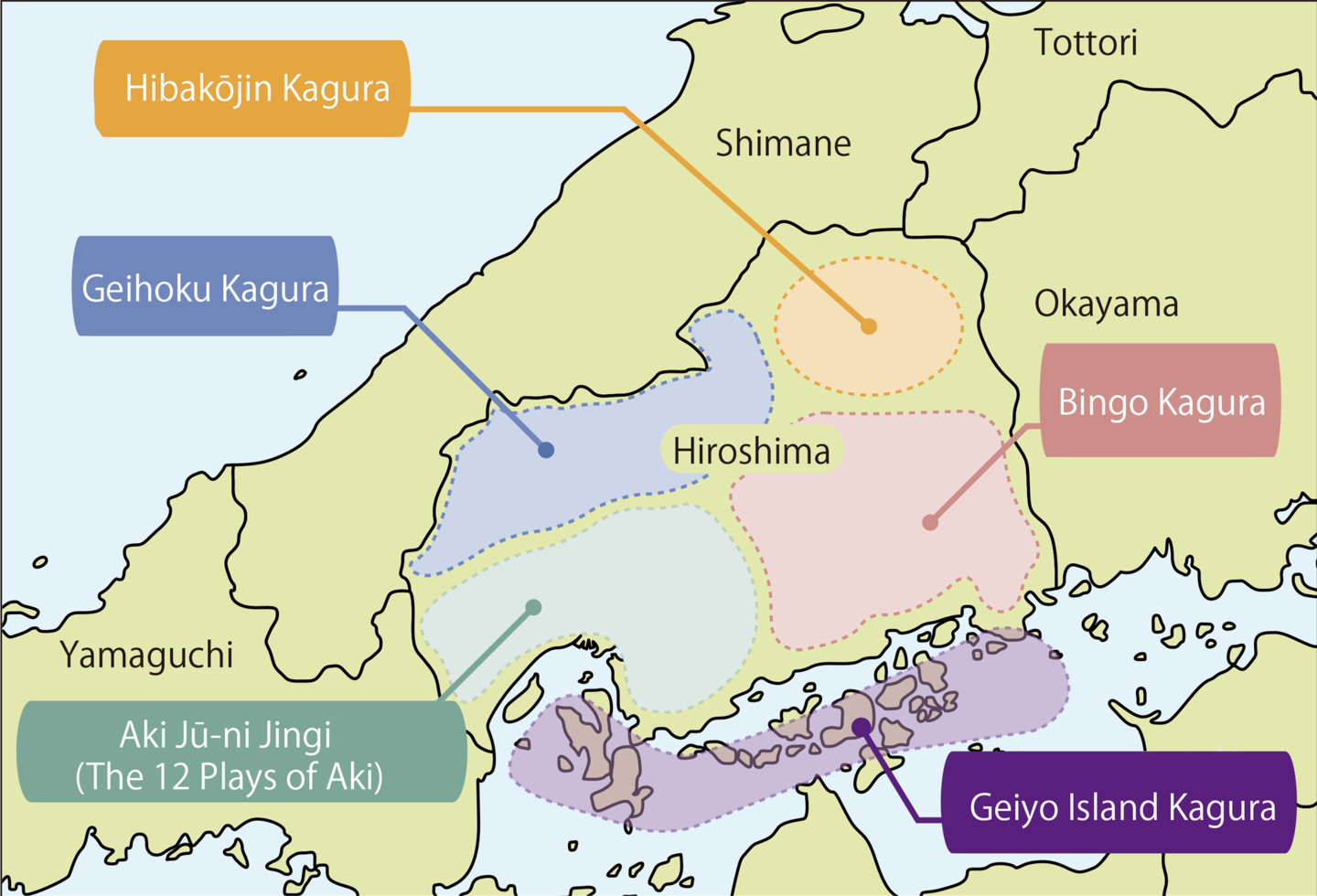
Style of Kagura: Geihoku Kagura
This form of kagura is widely known as Hiroshima Kagura across Japan. Originally a form of kagura from the Iwami region of Shimane, it came to the Geihoku region of Hiroshima at the end of the Edo Period (late 1860s). From there, it evolved into a unique form of kagura and is one of Hiroshima Kagura’s newest styles. Geihoku Kagura is characterized by its lavish costumes and huge masks.
Kagura Style: Aki Jū-ni Jingi
This style of kagura is can be found in cities along the coast of the Seto Inland Sea, such as Hiroshima City, Hatsukaichi City, and Ōtake City. The name Aki Jū-ni Jingi means “The 12 plays of Aki,” rooted in the tradition of performing 12 plays the evening before autumn festivals. Once an ancient style of kagura in the Geihoku region, it came to cities along the coast beginning at the end of the Edo Period and into the beginning of the Meiji Period (late 1860s-early 1880s). Aki Jū-ni Jingi was immensely popular and spread like wildfire. Today, it is recognized across Japan as a valuable example of the ancient style of kagura, preserving traditional dance performances such as Shōgun-mai (The Dance of the Shōgun) and Arahira-mai (The Dance of the Gods).
Style of Kagura: Geiyo Island Kagura
This style of kagura traveled across the islands in the Seto Inland Sea and surrounding areas beginning in the Edo Period (1603-1868). It also traveled west from the Shimanami Kaido area and into Kure City. The plays in Geiyo Island Kagura can be widely divided into two categories: ritual dance, where the dancers gracefully perform with gohei (wooden wands decorated with zigzagging white paper used in Shinto rituals) and formal dance, where the dancers don armor and dance in powerful and intense movements wielding swords, bows, and naginata pole swords. Geiyo Island Kagura is easily identifiable as it is the only kagura performed atop two straw mats.
Style of Kagura: Hibakōjin Kagura
Hibakōjin Kagura is only performed in one portion in and around the former Hiba region. While it is partially influenced by Bicchu Kagura of Okayama Prefecture, it is still a form of kagura that is unique to Hiroshima Prefecture, preserving an extremely ancient form of the tradition. A Designated National Important Intangible Cultural Asset, it is well known by researchers for its preservation of the ancient style of Kami-gakari (channeling the gods) and has become incredibly famous across Japan.
Style of Kagura: Bingo Kagura
Bingo Kagura is performed across a wide area from the Bingo Region to southeast Aki, except in regions where Hibakōjin Kagura is performed. Since ancient times, this style of kagura has been passed down orally from master to apprentice. One of the most distinctive performances is the Gogyō-sai, also known as the “The Kagura of Princes” because the five main characters are all princes. With dialogue, music, and dance, Gogyō-sai is a powerhouse of entertainment. Bingo Kagura preserves many of the older style of kagura performance, as well as traditional Shinto ritual dances.
